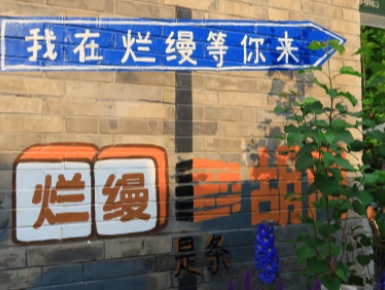Rambling in the Hutong, and Admiring the Beauty of the City
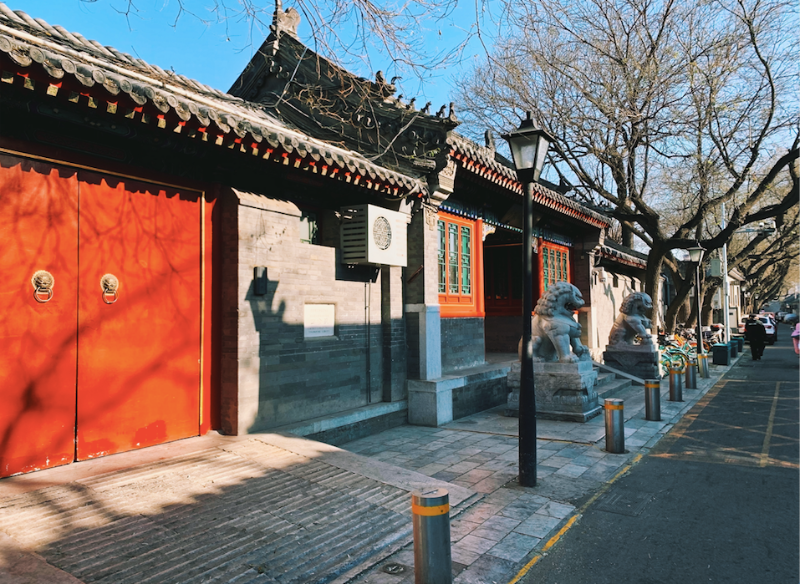
Hutong [Photo via tuchong.com]
Speaking of Beijing's ancient capital culture, we have to mention Hutong. Hutong is an inevitable destination for visitors in Beijing. In Chinese, "Hutong" is actually the transliteration from Mongol in 1267, more than 700 years ago. Hutong, as a product of a profound history, naturally represents the historical feature of Beijing. Rambling in the depths of Hutong and watching the people and things around, you'll travel across the boundary of time to Peiping before you're brought back to reality by the surrounding clamor. Then, you look at everything around and smile.
Wudaoying Hutong
Wudaoying Hutong is an old lane stretching from Yonghegong Lama Temple Street in the east to Andingmen Inner Street in the west. Meanwhile, it connects with Jianchang Hutong in the south. Wudaoying Hutong, which is 632 meters long and 6 meters wide, has 69 courtyards, making itself the first choice for visitors to have a rest and seek serenity after visiting the Yonghegong Lama Temple. At first glance, it looks like Nanluogu Alley, and after walking around, you'll feel the difference between the two. Wudaoying tends to be more serene and artful.
Wudaoying was settled in Chongjiaofang and was formerly known as Wude Weiying. It was there since Zhu Di, Emperor Taizu of the Ming Dynasty, built the capital in ancient Beijing. It is said to be the barracks station of the Ming Dynasty defending the city. It was renamed "Wudaoying" in the Qing Dynasty, and then was renamed "Wudaoying Hutong" in 1965 when the official rectification was implemented.
Wudaoying Hutong has now been positioned as a lane featuring tourism, leisure and cultural experience. Due to the well-maintained appearance and pleasant environmental conditions, many people choose to start business here. There are many cultural stores, including diverse creative shops, tranquil cafes, exquisite handicraft workshops, cat-themed handmade porcelain shops, and elegant vegetarian restaurants, which can be seen everywhere in this place.
The shop owners on both sides have planted abundant characteristic green plants, which make a pleasant shade in summer while boasting reddish leaves in autumn. Thus Hutong is covered with picturesque views throughout the year. The delicate things like customs and culture need to be appreciated by people who are calm.
Roaming on the road, you can see people chatting in stores, or young girls making handicrafts in the workshop. With beautiful bicycles and old houses carpeted with vines, it is really a good place for people to rest and chat. Visitors can also find hostels here.
Wudaoying Hutong is truly a paradise for foodies, in which you can taste specialties from all over the country or even the world. Here you can experience the customs of Yunnan, feel the collision between Siheyuan and Sichuan hot pot, savor Mexican cuisines, and taste the flavor from Southeast Asia, not to mention various desserts you prefer after meal...
Just as each reader has a different view on Hamlet, Wudaoying Hutong is differing in everyone's eyes. However, you'll be attracted by its literary and artistic feature. Wudaoying Hutong is tranquil, artful, and slow-paced, telling a new story of the old Hutong with another appearance.
Transportation: Taking Line 5 to Exit G (SW), Yonghegong Lama Temple Station
Address: Wudaoying Hutong, Andingmen Gate, Dongcheng District, Beijing
Nanluogu Alley
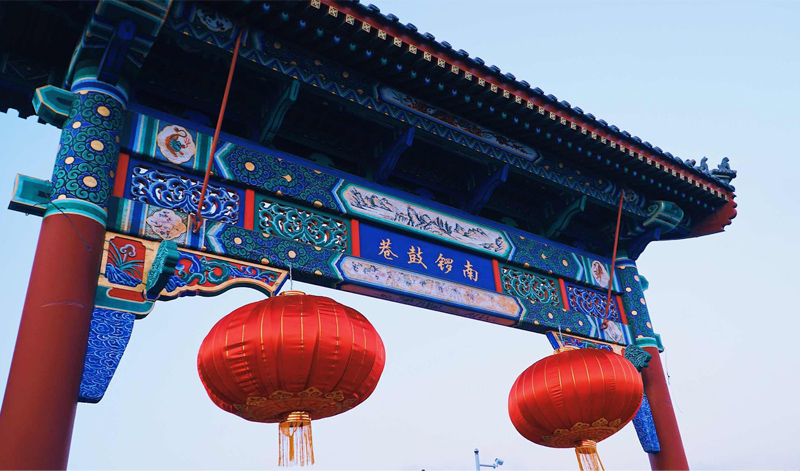
Nanluogu Alley [Photo via tuchong.com]
The bustling streets are swarming with tourists in Nanluogu Alley, one of the earliest commercial streets in Beijing. Now, it is full of loud laughter and hawking. The bright and fiery atmosphere lightens the street like a flame, carrying the memories of tourists. You may not have been to Nanluogu Alley before, but you must have heard its name. In every peak season, there are many news reports about tourist overflow. The street is always crowded every time I go there. Nanluogu Alley is indeed the most crowded alley in Beijing!
Located in the west of Dongcheng District, Nanluogu Alley is adjacent to South Jiaodaokou Street in the east, Di'anmenwai Street in the west, Gulou East Street in the north, and Pingan Street in the south. Nanluogu Alley's advantageous geographic location has prolonged its prosperity throughout the ages. Until now, it is still bustling with people and clamor.
The region where Nanluogu Alley is settled took shape in the Yuan Dynasty, and "Zhaohui Lane" in the Yuan Dynasty is right at Nanluogu Alley and its eastern and western areas; according to Wan Shu Za Ji, the region where Nanluogu Alley is settled was exactly the boundary of "Zhaohui Lane" and "Jinggong Lane", and it was named "Luoguo Alley" because this place looked like a turtle shell upside down; in Lane and Alley Annals of Ancient Capital, after the capital of the Qing Dynasty was established in Beijing in 1644, inner and outer cities were divided into ten lanes, and Nanluogu Alley was subject to Zhongxi and Lingzhong. According to the Complete Map of Peking, Qianlong Period, Luoguo Alley at that time had been renamed Nanluogu Alley. Zhaohui Lane in the Yuan Dynasty was adjacent to the imperial garden in the south, and faced the Drum Tower and the Center Pavilion in the north. Its geographic location was truly superior. During the Qing Dynasty, people living in Nanluogu Alley and Hutong on both sides were 18 Zuoling (an ancient Chinese official title) officers and their families who belonged to Bordered Yellow Banner of Manchu in Qing Dynasty and enjoyed great power and authority at that time.
According to Annals of Xijin, the area around the Bell Tower and Drum Tower of the Yuan Dynasty was a prosperous commercial street where merchants traded in hats, furs, rice and others. Nanluogu Alley was next to the southeastern corner of the Drum Tower, and the canal cut by Guo Shoujing passed through this place. It is easy to figure out that Nanluogu Alley located in the central area was also prosperous in the Yuan Dynasty. Since the Ming and Qing dynasties, especially during the Republic of China, a lot of shops gathered in Nanluogu Alley. Until now, although it has gone through 800 years and several dynasties, this street has been adjacent to the bustling commercial street, remaining prosperous and bustling.
From the south to the north, Nanluogu Alley is 786 meters long and 8 meters wide. Eight parallel Hutongs stretch out from both sides of the main trunk. Hutongs on both sides are regularly arranged and resemble centipedes, so Nanluogu Alley is also called "Centipede Street". The centipede's body is composed of 16 Hutongs extending from the east and west sides of the alley. From north to south, the eight Hutongs of Qiangulouyuan, Heizhima, Shajing, Jingyang, Mao'er, Yu'er, Suoyi and Fuxiang are put in order on the west side while another eight of Ju'er, Rear Yuanensi, Front Yuanensi, Qinlao, Beibingmasi, Dongmianhua, Banchang and Chaodou are arranged in order on the east side. These fishbone-shaped Hutongs are arranged in an orderly manner to form the body of the centipede, and the two wells at the northernmost end of Nanluogu Alley are similar to eyes of the centipede.
If Nanluogu Alley is known for its numerous Hutongs, then the worn and silent residences where many celebrities had lived in will make this alley glimmer. According to relevant research and statistics, there are 27 old celebrity residences in the Nanluogu Alley. The 343-meter-long Yu'er Hutong starts from Nanluogu Alley in the east and to Dongbuyaqiao Hutong in the west. There are also many celebrity residences. Among them, No.33 and No.31 mansions were the former residences of General Su Yu and Marshal Luo Ronghuan respectively; Qi Baishi's former residence was at No.13 Yu'er Hutong, which is now used by "Beijing Artists Association". No.2 mansion in Suoyi Hutong is an old Siheyuan of Mr. Aisin-Gioro Puren, a former member of the National Committee of the Chinese People's Political Consultative Conference and Beijing Municipal People's Political Consultative Conference. The small western-style building standing in No.7 Ju'er Hutong, was once an important part of the mansion for Ronglu, a high-ranking official in the late Qing Dynasty.
No.35 and No.37 Mao'er Hutong used to be residence for Wanrong, which was originally built by Wanrong's great-grandfather, Gololo Hala Changshun. In 1922, after Wanrong was chosen as the queen, this place was renamed as Cheng'en Official Mansion and rebuilt as the "boudoir mansion" to the queen. The former residence of Mao Dun was located at No.13, Rear Yuanensi Hutong, which used to be the site of Yuanen Temple in the Yuan Dynasty. Mao Dun moved here in 1974, and the shadow wall in front of the door was inscribed with the "Former Residence of Mao Dun" by Comrade Deng Yingchao.
At present, Nanluogu Alley is a famous commercial street across the country, crowded with various stores. Stores selling handicrafts, trendy specialty food, meat sauce noodles and beverage are jammed with people. Let me introduce some of them to you so that you can have a visit later.
Pengmu Micro Landscape Experience Center is a handicraft store. Four partners whose inspiration had accidentally coincided created "Pengmu" by introducing the trendy art concept from Japan. The store is very warm and cute. It is decorated with a warm and cute style, selling various moss micro landscape DIY products. You can also come here and create a micro world with your own imagination. If you're unable to make your own artwork, the staff will give you detailed guidance. Watching the micro landscape you create grow up is really a pleasant thing.
Katchup is a restaurant that you should not miss when passing by. The shop has a clean and separate toilet and a kitchen without a door, which means that the chef will make dishes just behind the counter and you can witness the whole process. A tofu salad at a price of CNY 48 contains artichokes soaked with olive oil. Customers who can appreciate the ingredients may not be so many, but the owner still uses such an expensive ingredient in this dish. How nice the owner is! The tofu burger is always the favorite dish for me! Shortcake made of tofu and potatoes and seasoned with teriyaki sauce will taste more palatable with Japanese ice algae. Also, the restaurant will serve with chips that are thicker and longer than fingers! Snacks, salads, soups, burgers, steaks, and even desserts are delicious! With reduced coffee nectar and a little bit of sour lemon, the inner part of the finger cookie covered by cheese paste is still tasty and refreshing. It takes a little more strength to cut it open. Awesome!
Walking along the alley, you can see a lot of stores on both sides, a real feast for the eyes. It is really pleasant to walk around! The Nanluogu Alley is crowded all the time, so you don't have to avoid the peak hour purposely!
Transportation: Taking Line 6 or Line 8 to Nanluogu Alley Station
Address: Nanluogu Alley Hutong, Dongcheng District, Beijing
Zhuanta Hutong
Zhuanta Hutong is located near Xisi Pailou, of which the name comes from the cinerous brick tower with octagonal and seven-layered eaves at the east entrance of the Hutong. This tower was built up in the Yuan Dynasty and has a history of more than 600 years according to historical documents. In Capital Alley and Hutong Collection in Wucheng Lane (written by Zhang Jue in the 39th year of Emperor Jiajing's reign), and Chen Yuan Shi Lue ( written by Wu Changyuan in the 53th year of Emperor Qianlong's reign), Zhuanta Hutong was recorded as a historical site in ancient capital. That is to say, Zhuanta Hutong has a profound history. The best proof for the long history of the Zhuanta Hutong is Zaju Opera of the Yuan Dynasty. It turned out that in the Yuan, Ming, and Qing dynasties, the Zhuanta Hutong was one of the liveliest places in Beijing and the center for opera performance.
The Zaju of the Yuan Dynasty was very popular in Beijing. In the first episode of opera named Zhang Sheng Zhu Hai authored by Li Haogu, after Zhang Sheng fell in love with the dragon lady, Mei Xiang, maid of the dragon lady, mentioned the Zhuanta Hutong when she flirted with the young servant:
Young servant: "Mei Xiang, please give me your love token!"
Maid: "I'll give a broken fan and thus you can use it to fan a fire!"
Young servant: "Where can I find you?"
Maid: "At the store door in Zhuanta Hutong, Yangshijiaotou."
The supportive evidence of culture, art and history has a typical expression here. These lines from the Zaju of Yuan Dynasty were preserved to this day, which are sufficient for us to know that Zhuanta Hutong had been built up in the capital of the Yuan Dynasty, and its name has been preserved for more than 700 years.
This Hutong is never short of stories, because it was once an entertainment center gathering amusement performers and intellectuals in the Yuan, Ming and Qing dynasties. Meanwhile, it is never short of humanity. Zhang Henshui and Lu Xun, the famed writer and the author in the Republic of China had lived in this Hutong.
No.43 Zhuanta Hutong is the former residence for the famous writer Zhang Henshui. Mr. Zhang Henshui had lived here for nearly 16 years, spending half of his time in Zhuanta Hutong. Zhang Henshui, a name that is familiar to everyone. But I still want to talk more about this legendary writer. Mr. Zhang Henshui had worked hard all his life and had produced works of more than 40 million Chinese words. Any writer with this number can be considered as highly productive. It stands to reason that the quality of the articles written by highly productive writers may not be guaranteed, but there are countless famous works authored by Zhang Henshui, such as The Story of a Noble Family, Lovers' Destiny and other excellent works that have enjoyed reputation to now.
In the Zhuanta Hutong, Mr. Zhang Henshui wrote novels such as Peacock Flying Southeast and Lotus Lady, which are also highly recognized. The most stunning part is that Mr. Zhang Henshui could serialize seven novels simultaneously while ensuring that the same plot will never be repeatedly used in different novels. What is even more amazing is his incomparable ability to write at one stretch.
This is the Zhuanta Hutong, a Hutong that has witnessed history. It not only has the entertainment clamor, but also the literary elegance that needs to be savored. This must be the charm endowed by time!
Transportation: Taking Line 4 to Exit D (SW), Xisi Station
Address: Zhuanta Hutong, Xicheng District, Beijing
Dongjiaominxiang Alley
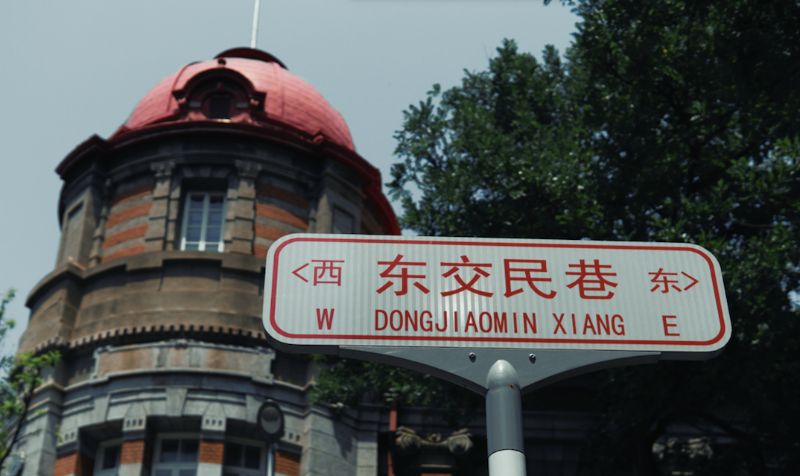
Dongjiaominxiang [Photo via tuchong.com]
In the vicinity of Tiananmen Square, there is a 1,552-meter-long Hutong stretching from Tiananmen Square East Road in the west to Chongwenmennei Avenue in the east, called "Dongjiaominxiang Alley". It is the longest old Hutong in Beijing.
It used to be a place of canal transport, so it was originally called "Dongjiang Rice Alley". In the Ming Dynasty, the Ministry of Rites (one of six major ministries in feudal Chinese government), Honglu Temple and Huitong Palace were settled in Dongjiaominxiang Alley, which were mainly used to receive envoys from four subordinate countries, including Annan, Mongolia, North Korea and Myanmar. In the Qing Dynasty, Huitong Palace was renamed Siyi Palace along with the modified policy, which regulated that foreign envoy should only live here for forty days.
After the Second Opium War in 1860, the Treaty of Tianjin allowed Britain, France, the United States, Russia, Japan, Germany, Belgium and other countries to successively set up embassies in Dongjiaominxiang Alley, and renamed it as Embassy Street.
On January 31, 1949, Peiping was liberated peacefully, and the armed forces of the People's Liberation Army marched through Dongjiaominxiang Alley, holding their heads high and sweeping away the shame suffered by Chinese armed personnel who had not been allowed to enter Dongjiaominxiang Alley for nearly half a century. On January 6, 1950, the Beijing Military Administrative Commission issued a notice solemnly announcing that all the land occupied by the imperialist barracks in Beijing would be recovered and all of the buildings would be requisitioned. Some countries establishing diplomatic relations with China were allowed to establish embassies in Dongjiaominxiang Alley.
Since 1959, embassies of all countries started to move to a place outside Jianguomen in the eastern suburb as required by the Chinese government. The history of establishing an embassy in Dongjiaominxiang Alley came to its end. In this year, the National Museum of Chinese Revolution and History was built on the west side of Dongjiaominxiang Alley. On the playground of the original embassy area, the buildings of the Ministry of Foreign Trade of the Central People's Government, the Ministry of Public Security, the National Light Industry Bureau, and the State Bureau of Textile Industry were erected. At the original side of German embassy, the Capital Hotel was built up. Meanwhile, the original horse race factory and playground on the west side of Chongnei Street were pushed over to build Dongdan Park and Dongdan Gymnasium.
Walking on the streets, you can still see those exotic buildings on both sides of the road. They seem to be telling the passers-by of the past history.
Transportation: Taking Line 5 to, Exit E (NW), Chongwenmen Station
Address: Dongjiaominxiang Alley, Dongcheng District, Beijing
Yandai Byway
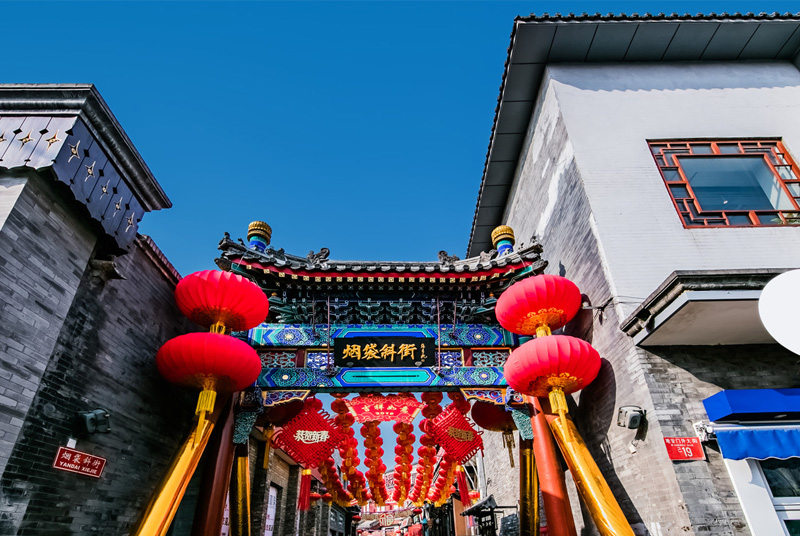
Yandai Byway [Photo via tuchong.com]
Yandai Byway is located in Gulouqian, Di'anmenwai Street, Beijing. From the end of the Qing Dynasty to the 1920s and 1930s, the street was mainly engaged in business regarding long-stemmed Chinese cigarette pouches, water pipes, antiques, calligraphy, ink painting, mounting pictures, stationery, snacks, and service industries.
It is said that most nobilities living in the northern part of the city were addicts to long-stemmed Chinese cigarettes or water pipes. They always put tobacco leaves in pouches. With the demand for tobacco pouches increased, tobacco pouch shops kept cropping up on the street.
What's more, the street itself looks like a tobacco pipe. The long and narrow street resembles the pipe while the east entrance of the street looks like the month of tobacco pipe. The west entrance turns to south and leads to Yinding Bridge, making the whole street look like a tobacco pipe.
The shape of Yandai Byway had the most direct relationship with the canal transport of grains in the Yuan Dynasty after Huitong River was repaired, so the prosperity of Yandai Byway began on Gulouxi Avenue. The capital layout of the Yuan Dynasty was specially designed as "the front court and the rear market". The place from Yongdingmen to three palaces was called "court" while the place behind the Drum Tower was the market.
The Great Qing Post Office on Yandai Byway is also a major feature. If you send a letter here, you may travel across time to the ancient streets of Beijing.
The most prosperous time of Yandai Byway was in the Emperor Guangxu's reign in the Qing Dynasty when many restaurants, restaurants, tobacco shops, tea houses, baths, etc. appeared.
In particular, two stores, "Tong Tai Sheng" and "Shuang Sheng Tai", which were engaged in selling smoking appliances, appeared. It is said that the owners of the two stores used to wash the water pipes for Naladai. Thus, they both enjoyed a great name in Beijing.
Yandai Byway is 232 meters long and is adjacent to Nanluogu Alley. It can be said that here you can also experience the authentic taste prevailing in Beijing in the old days.
Yandai Byway is not very long and it won't take too long for you to take a walk. As one of the well-preserved Hutongs, Yandai Byway is also lively and extraordinary. Many tourists are attracted by its reputation as a scenic spot, which also drives the business atmosphere in Hutong.
Most Beijingers like the alleys and old houses on both sides of Yandai Byway. Although they have been renovated, they still reveal the unique quality and elegance of Beijing.
You can see Houhai after walking through Yandai Byway, and there is also "Mountain Viewing at Yinding Bridge" on the list of "The Eight Great Sights of Yanjing (Present-day Beijing)". Yinding Bridge got its name because it resembled a silver ingot (Yinding in Chinese). In the past, people standing on the Yinding Bridge could appreciate the view in the Xishan Mountain, so the scene was called "Mountain Viewing at Yinding Bridge". It's like a space-time tunnel that connects the ancient buildings in the Ming and Qing dynasties with visitors in fashionable clothes. In the Siheyuan deep in the alleys, the cooking smoke rises just like yesterday. Walking along the northern bank of Houhai Lake, you'll come across the Prince Chun's Mansion. It was the former residence of Song Qingling, Nalan Mingzhu, and Yongxing. This is Yandai Byway, which contains everything, no matter it is elegant or vulgar, dynamic or quiet. The leisure and exquisite life of Hutong in Beijing are integrated in this place.
Transportation: Taking Line 8 to Exit A2(NW), Shichahai Station
Address: No.50, Di'anmenwai Street, Xicheng District, Beijing




